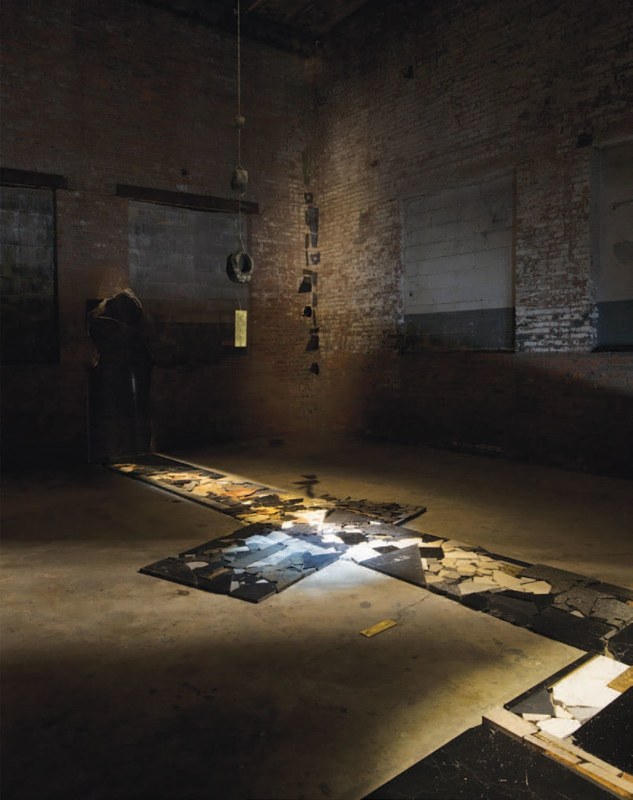Perla Krauze-THE CHIMNEY
Human beings move mountains, or pieces of them, every day. The impulse to carry stones, large and small, over great distances is one of the more curious ones that bind us to each other across time and space. The Egyptian pharaohs ordered thousands of tons of granite to be ferried hundreds of miles up the Nile to Giza. The builders of Stonehenge sneezed at local sources and quarried their megaliths in modern-day Wales. Today, architects order Italian travertine for corporate plazas in New York, and even children pocket souvenir pebbles on the beach.
In her exhibition at the Chimney, Perla Krauze seemed to address the ultimate fragility of the ziggurats, temples, skyscrapers, and roads we like to pretend are permanent. Gathering broken chunks of rock from all over the world, Krauze eloquently subverted the Ozymandian fantasies that attend the use of stone, undercutting its enduring currency in displays of power and influence. Arranging hundreds of fragments and machine-cut slabs, Krauze created a semi-cruciform mosaic on the rugged concrete floor of the gallery. Glossy hunks of obsidian lay edge to edge with terra-cotta shards, volcanic-basalt tiles, and slender rods and ragged trapezoids of slate and granite. These appeared alongside jagged bits of brick and at least one sandstone wedge, which looked like a tectonic mille-feuille, striated with delicate layers of dusty pink and red. Krauze personally collected these materials from sites throughout her native Mexico, including a quarry near Teotihuacan, and the southwestern United States. Others came from workshops and stores in Brooklyn that import their wares from countries such as Turkey and Brazil—emblems of the contemporary global mineral trade. Among the found pieces, Krauze incorporated flat bronze casts, covered in gold leaf, of cracks in the Chimney’s floor and nearby streets. The windowless space, an industrial remnant of a former oil refinery, was almost completely dark, save for warm beams of light shafting down from fixtures twenty-three feet overhead. The lighting, combined with the stillness of the air and the absence of noise, created a sense of ritual, as though this were an archaeological site or an underground tomb.
The show, rich in atmosphere, suffered in places from slipshod installation. A cluster of LED pin lights, crudely concealed in a sleeve of black craft paper and stuck to the wall above some small objects on a window ledge, was the worst offender. Two hanging works, comprising wires punctuated by stones resembling oversize beads or loom weights, felt like afterthoughts. Krauze, however, cleared a bigger hurdle. A number of artists trafficking in found objects these days lean too heavily on the intrinsic fascination of their materials, relying on the poetic and historical associations of their media to supply the conceptual heft of their work. Krauze successfully avoided this pitfall by sensitively and seamlessly stitching her work into the craggy environment, creating an impactful rumination on time and its ravages. These themes might have seemed abstract in a white-cube setting, but they felt visceral and immediate inside the raw-brick and cinder-block gallery, itself a repurposed ruin. There, as one walked gingerly over shattered stones from several continents, the only thing clearer than time’s capacity to reduce our most impressive cities to rubble was the fact that humans will never stop building them. Against one wall, where the mosaic pavement terminated, Krauze had erected an imposing, sepulchral slab of black marble that held a dark reflection of the room. In it, one could just make out the fragmented path extending onward and vanishing into the void.

